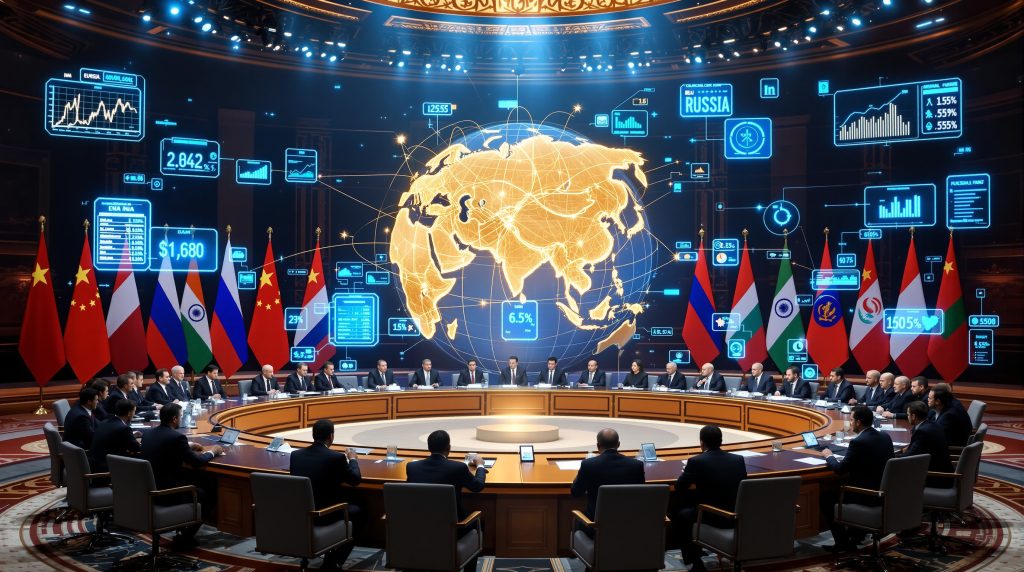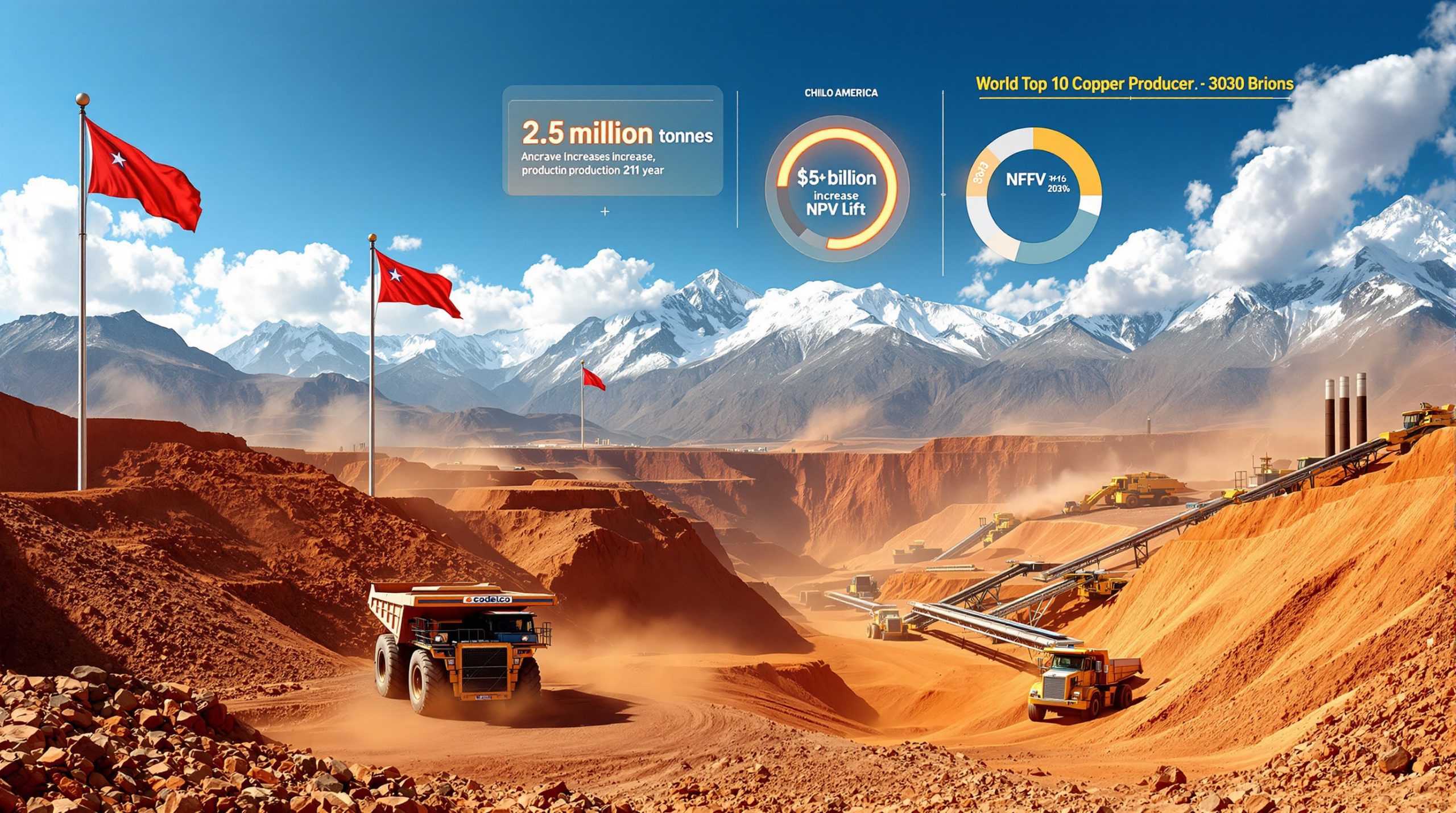How Is the Shanghai Cooperation Organization Transforming Global Power Dynamics?
The Shanghai Cooperation Organization (SCO) has evolved significantly from its origins as a regional security forum into a powerful geopolitical alliance challenging Western dominance. As member nations deepen cooperation across security, economic, and diplomatic spheres, the organization is increasingly positioning itself as an alternative power center in global affairs.
What began primarily as a mechanism for coordinating responses to terrorism and extremism has transformed into a comprehensive platform for economic integration and strategic collaboration. This evolution reflects broader shifts in international relations and signals important changes in how nations are aligning themselves in a multipolar world.
The SCO's Expanding Influence and Membership
The SCO now encompasses nearly half the world's population and approximately a quarter of global GDP, making it one of the largest regional organizations by both geographic coverage and population. Over 20 nations participated in the recent SCO summit, marking it as the largest gathering in the organization's history.
Its growing membership includes major powers like China, Russia, and India, alongside Central Asian nations and newer members such as Iran and Belarus. This diverse coalition represents a significant bloc of nations seeking cooperation outside Western-dominated institutions.
The organization's expanding membership demonstrates its growing appeal to nations seeking alternative frameworks for international cooperation—ones that emphasize sovereignty and non-interference in domestic affairs rather than adherence to Western political models.
From Security Coordination to Economic Integration
Originally focused on counter-terrorism and border security, the SCO has dramatically expanded its mandate to include:
- Infrastructure development across transportation networks connecting member states
- Energy security coordination and resource sharing, particularly in oil, gas, and renewable sectors
- Financial cooperation and trade facilitation between emerging economies
- Digital economy and technological collaboration, including information systems development
This evolution demonstrates how the organization has matured beyond its initial security focus to address comprehensive economic development needs of member states. The SCO now represents what analysts describe as a "full stack proposition"—addressing security, economic, and diplomatic interests simultaneously.
What Strategic Objectives Drive the SCO Summit?
The SCO's evolution reflects a strategic pivot from security coordination to comprehensive economic partnership. Recent summits have increasingly focused on building institutional frameworks that can support sustainable regional development and reduce dependence on Western-dominated systems.
Building Alternative Financial Infrastructure
The SCO is actively developing financial mechanisms that operate independently from Western-dominated systems:
- Creating dedicated development banks for infrastructure financing to complement existing bilateral funding
- Establishing direct currency exchange arrangements between member states' central banks
- Developing alternative payment messaging systems outside SWIFT, with China, Russia, and Iran each developing their own systems since 2013-2014
- Promoting local currency settlements to reduce dollar dependency and minimize transaction costs
These initiatives aim to insulate member economies from Western financial pressure and sanctions while creating more autonomous economic relationships. By reducing dependence on dollar-denominated transactions and Western financial infrastructure, the SCO is developing resilience against external economic pressure.
Strengthening Regional Security Frameworks
Security cooperation remains a cornerstone of SCO activities:
- Joint military exercises and intelligence sharing among member states
- Coordinated counter-terrorism operations against regional threats
- Cybersecurity cooperation and information protection systems
- Border management and transnational crime prevention mechanisms
The organization has established specialized centers to address security threats, demonstrating its commitment to regional stability through collective action rather than reliance on external security guarantees. This approach allows member states to address shared security concerns without subordinating their sovereignty to outside powers.
Promoting a Multipolar World Order
The SCO explicitly advocates for a more balanced international system:
- Supporting the principle of non-interference in sovereign affairs
- Rejecting unilateral sanctions and military interventions
- Advocating for reformed global governance institutions with greater representation
- Emphasizing cultural diversity and different development paths
This stance directly challenges the Western-led liberal international order and offers an alternative vision for global governance based on state sovereignty and non-intervention. China has consistently articulated that it has "no interest in replacing the United States" as a global hegemon, instead promoting a genuinely multipolar system where various regional powers can cooperate without domination.
How Do Key SCO Member States Benefit?
The SCO's value proposition varies significantly for different member states, reflecting their diverse strategic priorities and economic needs. Each major player derives distinct advantages from participation while managing their individual relationships with both fellow members and external powers.
China: Expanding Economic Influence
For China, the SCO provides multiple strategic advantages:
- Secures stable markets for Chinese goods and services across Eurasia
- Creates outlets for excess industrial capacity through infrastructure development
- Establishes reliable resource supply chains for energy and raw materials
- Extends the Belt and Road Initiative (BRI) through institutional support
- Builds diplomatic counterweight to US-led alliances in the region
China's market strategies within the SCO allow it to shape regional development in ways that complement its broader economic and strategic objectives. Since launching the BRI in Central Asia in 2013, China has delivered approximately $1 trillion in infrastructure loans to over 103 countries worldwide, creating the physical foundations for expanded trade and influence.
The SCO provides China with a framework to deepen this integration through additional layers of institutional support. As Chinese leaders recognize, "if you want a place to get rich, you need to build roads first"—a philosophy that has guided China's regional infrastructure development strategy.
Russia: Diplomatic Counterbalance
Russia leverages the SCO to:
- Maintain influence in Central Asia, its traditional sphere of influence
- Demonstrate international standing despite Western isolation
- Secure economic partnerships outside sanctions regimes
- Coordinate energy policy with other major producers
- Build strategic depth against NATO expansion
The organization provides Russia with an important platform for international engagement when many Western doors remain closed. By cooperating with China and other SCO members, Russia can partially offset the economic impact of Western sanctions while maintaining its role as a major regional power in Eurasia.
India: Strategic Hedging
India's participation reflects a careful balancing act:
- Maintaining strategic autonomy between major powers
- Securing energy supplies and trade routes across Central Asia
- Addressing regional security concerns, particularly terrorism
- Accessing Central Asian markets and resources
- Counterbalancing Chinese regional influence
India's involvement demonstrates how the SCO accommodates nations with complex and sometimes competing interests. Despite tensions with China, India recognizes the pragmatic benefits of participating in regional economic integration while maintaining its independent foreign policy stance.
As demonstrated at recent summits, India's Prime Minister Modi has engaged constructively with both Chinese and Russian leadership, highlighting the SCO's ability to facilitate dialogue even between nations with significant bilateral tensions.
What Diplomatic Symbolism Defined Recent SCO Summits?
The SCO has increasingly leveraged summit diplomacy to project an image of unity and growing international influence. Recent gatherings have been carefully choreographed to communicate specific messages to both domestic and international audiences.
Choreographed Leadership Interactions
Recent summits have featured carefully orchestrated moments between leaders:
- Handshakes between previously estranged counterparts, including South Korean officials and Kim Jong-un
- Joint appearances by nations with historical tensions, particularly Modi, Xi, and Putin
- Symbolic gestures of unity among diverse political systems
- Inclusive participation from states facing Western sanctions
These visual elements project an image of solidarity and demonstrate the organization's ability to bring together nations despite their differences. As one analyst notes, these events are now "run with half an eye to the optics" due to social media and real-time broadcasting, making message projection as important as substantive outcomes.
The underlying message is clear: the SCO provides a forum where "parties who have been engaged in long-standing disputes can begin to find ways of engaging," offering an alternative diplomatic platform to Western-dominated institutions.
Alternative Forum for Global South
The SCO positions itself as a champion for developing nations:
- Providing a platform for voices marginalized in Western-dominated forums
- Highlighting development models distinct from Western prescriptions
- Emphasizing sovereignty and non-interference principles
- Offering economic partnerships without political conditions
This framing resonates with many Global South nations seeking alternatives to traditional power structures and development paradigms. The SCO summit occurred in a global context where many developing nations feel increasingly alienated from Western-led institutions and seek more equitable forms of international cooperation.
Institutional Maturation Signals
Recent summits have showcased the organization's growing institutional capacity:
- Establishment of permanent specialized agencies with dedicated mandates
- Formalization of decision-making processes and governance structures
- Development of long-term strategic planning documents
- Creation of implementation mechanisms for agreements and joint projects
These developments signal the SCO's evolution from a discussion forum into an action-oriented institution with concrete capabilities. The announcement of the SCO Development Bank represents a significant step toward creating financial infrastructure to support the organization's broader economic objectives.
How Does the SCO Development Bank Transform Regional Economics?
The establishment of the SCO Development Bank marks a significant evolution in the organization's economic architecture, providing a dedicated financial institution to support regional development priorities independently of Western-dominated financial systems.
Infrastructure Financing Beyond Belt and Road
The SCO Development Bank represents a significant evolution in regional financing:
- Complementing bilateral Chinese financing with multilateral mechanisms
- Distributing financial responsibility among multiple member states
- Creating standardized project evaluation and implementation frameworks
- Enabling smaller economies to access development capital
- Supporting projects that enhance regional connectivity and integration
This institution adds another layer to existing financing channels while giving member states more collective ownership over regional development priorities. Unlike bilateral BRI funding, the SCO Development Bank creates a shared institutional framework that reflects the interests of all participating nations rather than a single dominant power.
The bank "adds another layer to the BRI" while enabling "enterprises to expand" across the region by providing both infrastructure and working capital financing. This approach helps address a fundamental challenge for developing economies—the lack of sufficient scale to effectively access and service the massive Chinese market.
Energy Infrastructure Prioritization
The bank places special emphasis on energy development:
- Supporting diverse energy generation projects from nuclear to renewables
- Financing cross-border transmission infrastructure to connect producing and consuming regions
- Developing storage and distribution networks for greater energy security
- Enabling energy resource sharing among member states
- Supporting energy independence from external suppliers
These priorities reflect the central importance of energy security to economic development and strategic autonomy within the region. As one expert notes, "underpinning development is actually energy. Without expanding energy systems, you don't actually get development."
The bank will provide "financial support geared towards energy systems development" including "nuclear capabilities all the way through to micro grids, renewable energies, batteries," recognizing that energy infrastructure represents the foundation for broader economic development.
Digital and Information Systems Development
Alongside physical infrastructure, the bank supports digital connectivity:
- Financing telecommunications networks and data centers across member states
- Supporting development of independent payment systems and financial infrastructure
- Enabling cross-border e-commerce platforms and digital trade
- Investing in digital security infrastructure to protect member state interests
- Promoting technology transfer among member states
This digital focus demonstrates how the SCO is addressing next-generation connectivity needs beyond traditional infrastructure. Information systems and supply chain networks represent the next frontier in regional integration, building upon the physical infrastructure developed through previous initiatives.
By creating these digital capabilities, the SCO enables more efficient economic integration and reduces vulnerability to Western technological sanctions or restrictions. This digital layer complements the physical infrastructure established through the BRI and creates a more resilient regional economic architecture.
What Real-World Examples Show the SCO's Economic Impact?
The SCO's economic influence can be seen in concrete developments across multiple sectors. These examples demonstrate how coordinated policy and investment approaches can rapidly transform economic landscapes and shift global market dynamics.
The Indonesian Nickel Industry Transformation
Indonesia's nickel industry exemplifies how strategic resource development can reshape global markets:
- Production capacity expanded from minor player to supplying 65% of global refined nickel, projected to reach 75%+ by 2029
- $65 billion in Chinese development financing created world-class processing capabilities
- Price dynamics shifted to disadvantage Western producers in Canada and Australia
- Vertical integration captured value previously lost to foreign refiners
- Strategic control of critical battery material supply chains established
This case demonstrates how coordinated investment and policy can rapidly transform a nation's position in global resource markets. Indonesia's government "introduced policies that significantly encouraged Chinese investment" leading to "value-adding capability in Indonesia" rather than simply exporting raw materials.
The development "tilted the market into the favor of Indonesian-based mines and Indonesian-based processes," resulting in many Canadian and Australian operations being placed "on care and maintenance" as they cannot compete with Indonesia's cost structure. For comparison, OPEC at its 1973 peak supplied 55% of the world's oil—Indonesia's 65% nickel market share represents an even more dominant position.
Central Asian Energy Corridor Development
Energy infrastructure projects across Central Asia show regional integration in action:
- Cross-border natural gas pipelines connecting producing and consuming nations
- Electricity transmission networks enabling power sharing during seasonal peaks
- Joint hydropower development on shared waterways
- Coordinated energy export strategies to maximize collective benefits
- Reduced dependence on extra-regional energy markets
These projects create tangible economic interdependencies that strengthen regional cohesion while enhancing energy security. The SCO provides an institutional framework for coordinating these developments and ensuring they serve the interests of all participating nations rather than external powers.
Financial System Bypass Mechanisms
The development of alternative financial channels demonstrates practical implementation:
- Currency swap agreements between central banks enabling direct settlements
- Dedicated messaging systems replacing SWIFT for inter-bank communications
- Special purpose financial institutions handling sanctioned transactions
- Local currency settlement mechanisms reducing dollar dependency
- Digital payment corridors operating outside Western-controlled systems
These mechanisms provide practical tools for economic activity that remains resilient against external pressure. China developed CIPS, Russia developed its own system, and Iran developed its own payment infrastructure from 2013-2014 onwards, creating alternative channels for financial communication that cannot be disrupted by Western sanctions.
By reducing dependence on Western financial infrastructure, SCO members can maintain economic relationships even during periods of geopolitical tension. This resilience represents a significant shift in the global financial architecture and reduces the effectiveness of financial sanctions as a tool of Western foreign policy.
How Might Regional Alignments Shift in the Coming Decade?
The evolving SCO framework is likely to influence how nations in the broader Indo-Pacific region position themselves strategically. Several key countries face complex choices regarding their relationships with both the SCO bloc and Western powers.
Australia's Strategic Dilemma
Australia faces complex choices regarding its regional positioning:
- Geographic reality places it firmly within the Indo-Pacific sphere
- Economic dependency on China (30% of exports) creates powerful incentives for engagement
- Security relationships with the United States involve increasing commitments, including naval facilities
- Regional neighbors increasingly accommodate Chinese influence
- Domestic debate intensifies over appropriate strategic posture
Australia's future approach may involve more nuanced positioning that acknowledges both security concerns and economic realities rather than binary alignment choices. As one regional expert describes it, Australia currently has "one foot on either side of a barbed wire fence" with "one careless step" potentially leading to injury.
While Australia has traditionally aligned with Western powers, particularly the United States through the ANZUS alliance, the country's long-term strategic orientation may evolve as regional power dynamics shift. Australian strategic thinkers like Professor Hugh White argue that the country must eventually "come to grips with living in an Asia in which China is the dominant power."
Japan's Resource Security Calculations
Japan's energy vulnerability creates powerful incentives for regional engagement:
- Critical dependence on imported energy creates strategic vulnerability
- Northeast Asian energy resources offer potential supply diversification
- Advanced Japanese technologies could leverage regional renewable resources
- Hydrogen economy development requires stable energy partnerships
- Aging demographics increase pressure for economic efficiency
These factors may gradually push Japan toward more pragmatic engagement with continental neighbors despite current security alignments. While Japan hosts American military bases, its material conditions as a resource-poor nation create strong incentives for deeper regional integration.
Japan's potential for "energy sovereignty" through partnerships with Northeast Asian neighbors could significantly influence its long-term strategic calculus. Access to cheap upstream energy from regional partners could transform Japan's hydrogen sector capabilities, creating a pathway to greater energy independence that might gradually shift its geopolitical orientation.
The Taiwan Question's Evolution
Cross-strait dynamics continue to evolve within complex constraints:
- Shifting public opinion responding to international developments, particularly Ukraine
- Economic integration creating practical interdependencies
- Military capability developments altering strategic calculations
- Domestic political transitions influencing policy approaches
- International recognition environment continuing to narrow (only 11 countries recognize the Republic of China)
While immediate reunification appears unlikely, gradual evolution of positions and increasing practical cooperation may characterize the medium-term trajectory. Recent referendum defeats for pro-independence forces in Taiwan indicate changing public attitudes, with growing recognition that "the big protector that people thought was going to be there" may have "its own priorities."
Military-to-military back-channel discussions may increase in importance, as professional military leaders on both sides seek to avoid conflict while establishing frameworks for potential future integration. These practical discussions would need to address how militaries might "resolve their standoff" and "eventually integrate" in any reunification scenario.
What Does the SCO Reveal About Changing World Order?
The SCO's development provides valuable insights into how international relations are evolving in a post-Western-dominated world. Its institutional architecture and operating principles represent a distinct approach to international cooperation that may become increasingly influential globally.
Multi-Layered Institutional Development
The SCO exemplifies a new approach to international institution building:
- Overlapping memberships across multiple regional organizations creating flexible networks
- Specialized institutions addressing specific functional needs rather than comprehensive integration
- Flexible engagement models allowing varied levels of participation based on national interests
- Pragmatic cooperation despite political differences between member states
- Emphasis on concrete projects rather than ideological alignment
This approach contrasts with more rigid alliance structures of the past and offers greater adaptability to complex regional realities. The SCO, alongside other institutions like the BRICS New Development Bank, forms part of an emerging ecosystem of complementary organizations that collectively provide alternatives to Western-dominated institutions.
This institutional proliferation represents a more organic approach to international cooperation—one that accommodates diversity and focuses on practical outcomes rather than ideological conformity. The result is a more resilient network of relationships that can withstand bilateral tensions while maintaining multilateral cooperation.
Rebalancing of Global Economic Gravity
The organization reflects broader economic power shifts:
- Rising importance of non-Western consumer markets driving trade patterns
- Growing south-south trade and investment flows bypassing traditional hubs
- Increasing technological capabilities outside traditional centers
- Resource leverage being deployed for strategic advantage
- Financial architecture diversification reducing Western dominance
These trends indicate a fundamental restructuring of global economic relationships rather than temporary adjustments. The SCO provides an institutional framework that accelerates and reinforces these shifts by creating dedicated mechanisms for south-south cooperation outside Western control.
China's rise has created a massive market representing 17% of the world's population, creating new patterns of economic gravity that pull other economies into its orbit. For many developing nations, the challenge is not whether to engage with China but how to build the capacity to effectively service this enormous market—a challenge the SCO helps address through its development initiatives.
Sovereignty-Centered International Relations
The SCO promotes a distinct vision of international engagement:
- Emphasis on non-interference in domestic affairs, regardless of political systems
- Rejection of externally imposed political conditions for economic cooperation
- Acceptance of diverse political and economic systems as legitimate choices
- Prioritization of practical cooperation over ideological alignment
- Focus on stability and development rather than political transformation
This approach appeals to nations seeking development partnerships without accompanying political pressures. By explicitly rejecting the conditionality that often accompanies Western engagement, the SCO offers a model of international cooperation that many developing nations find more respectful of their sovereignty.
This sovereignty-centered framework directly challenges the liberal interventionist paradigm that has characterized Western foreign policy since the end of the Cold War. Instead of promoting universal political models, the SCO emphasizes the right of each nation to choose its own development path based on its unique circumstances and traditions.
Frequently Asked Questions: Understanding the Shanghai Cooperation Organization
What distinguishes the SCO from other international organizations?
The SCO differs from Western-led institutions in several key ways:
- It operates without dominant Western membership or leadership
- It emphasizes non-interference in domestic affairs as a core principle
- It accommodates diverse political systems without requiring democratic reforms
- It focuses on practical cooperation rather than ideological alignment
- It addresses security concerns through collective regional approaches
These characteristics make it attractive to nations seeking alternatives to Western-dominated international frameworks. Unlike NATO or EU-style integration, the SCO does not demand political conformity from its members, instead focusing on areas of practical mutual benefit while respecting political differences.
How does the SCO affect global resource markets?
The organization influences resource markets through:
- Coordinating development strategies among major resource producers
- Creating regional supply chains that bypass traditional market centers
- Developing alternative financing for resource extraction and processing
- Enabling value-added processing within resource-producing regions
- Supporting strategic resource control by member states
These activities can fundamentally alter global supply dynamics and price formation for critical resources. The Indonesian nickel industry transformation exemplifies how coordinated policy and investment can rapidly reshape global commodity markets and create new centers of production outside traditional Western control.
What is the relationship between the SCO and the Belt and Road Initiative?
The SCO and BRI are complementary but distinct:
- The SCO provides institutional frameworks where BRI offers bilateral financing
- SCO security cooperation protects BRI infrastructure investments
- The SCO includes members beyond BRI's geographic scope
- SCO financial institutions complement Chinese bilateral funding
- The SCO predates BRI but has evolved alongside it
Together, they represent different aspects of a comprehensive approach to regional development and integration. The BRI focuses primarily on physical infrastructure development through bilateral arrangements, while the SCO provides multilateral institutional frameworks that support broader economic and security cooperation.
The SCO Development Bank adds "another layer to the BRI" by enabling enterprises to expand and creating financial mechanisms that can leverage the physical infrastructure established through BRI investments. This complementary relationship strengthens both initiatives and creates more sustainable foundations for regional integration.
How does the SCO address digital sovereignty?
The organization prioritizes digital independence through:
- Developing independent internet infrastructure and governance models
- Creating alternative payment systems and financial messaging networks
- Supporting indigenous technology development among member states
- Establishing data localization and cybersecurity frameworks
- Promoting information security cooperation against external threats
These efforts aim to reduce vulnerability to Western digital dominance and potential technological sanctions. By creating alternative digital infrastructures, SCO members can maintain economic and strategic autonomy even in an increasingly digitalized world.
The emphasis on information systems development recognizes that control of digital infrastructure has become as strategically important as traditional physical infrastructure. By building these capabilities cooperatively, SCO members can achieve digital sovereignty that would be difficult for any individual nation to establish alone.
The SCO's Significance for Global Power Transitions
The Shanghai Cooperation Organization represents more than just another regional grouping—it embodies fundamental shifts in how nations are organizing themselves in a post-Western-dominated world. Through practical cooperation across security, economic, and diplomatic domains, SCO members are creating alternative structures that reduce dependency on Western-controlled systems while building new patterns of regional integration.
The organization's evolution from security coordination to comprehensive economic partnership demonstrates how institutional development can follow practical needs rather than ideological blueprints. By accommodating diverse political systems and focusing on concrete projects, the SCO offers a flexible model for international cooperation that appeals to nations seeking development without political conditions.
As global power continues to redistribute, the SCO's approach to multilateralism—emphasizing sovereignty, non-interference, and practical cooperation—may become increasingly influential in shaping international relations beyond its geographic boundaries. Whether through its critical minerals strategy, security coordination mechanisms, or diplomatic platforms, the organization provides valuable insights into how international cooperation may evolve in a truly multipolar world.
The SCO does not seek to replace existing international structures with a competing hegemonic system. Rather, it represents a move toward genuine multipolarity, where regional powers collaborate on terms of mutual respect and benefit. China has "consistently made it clear that it has no interest in replacing the United States" as a global hegemon, instead promoting a more balanced international system where multiple centers of power coexist.
For observers of global affairs, the SCO offers an important window into emerging patterns of international cooperation that may increasingly shape the coming decades. Its practical success or failure will significantly influence whether the 21st century evolves toward productive multipolarity or destabilizing fragmentation, particularly as US‑China trade tensions and the implementation of US critical minerals policy continue to reshape the global economic landscape.
Want to Stay Ahead of the Next Major Mineral Discovery?
Don't miss out on valuable investment opportunities in the resources sector. Discovery Alert's proprietary Discovery IQ model instantly notifies investors of significant ASX mineral discoveries, turning complex data into actionable insights for both traders and long-term investors. Explore why major discoveries lead to substantial returns by visiting the Discovery Alert discoveries page.




